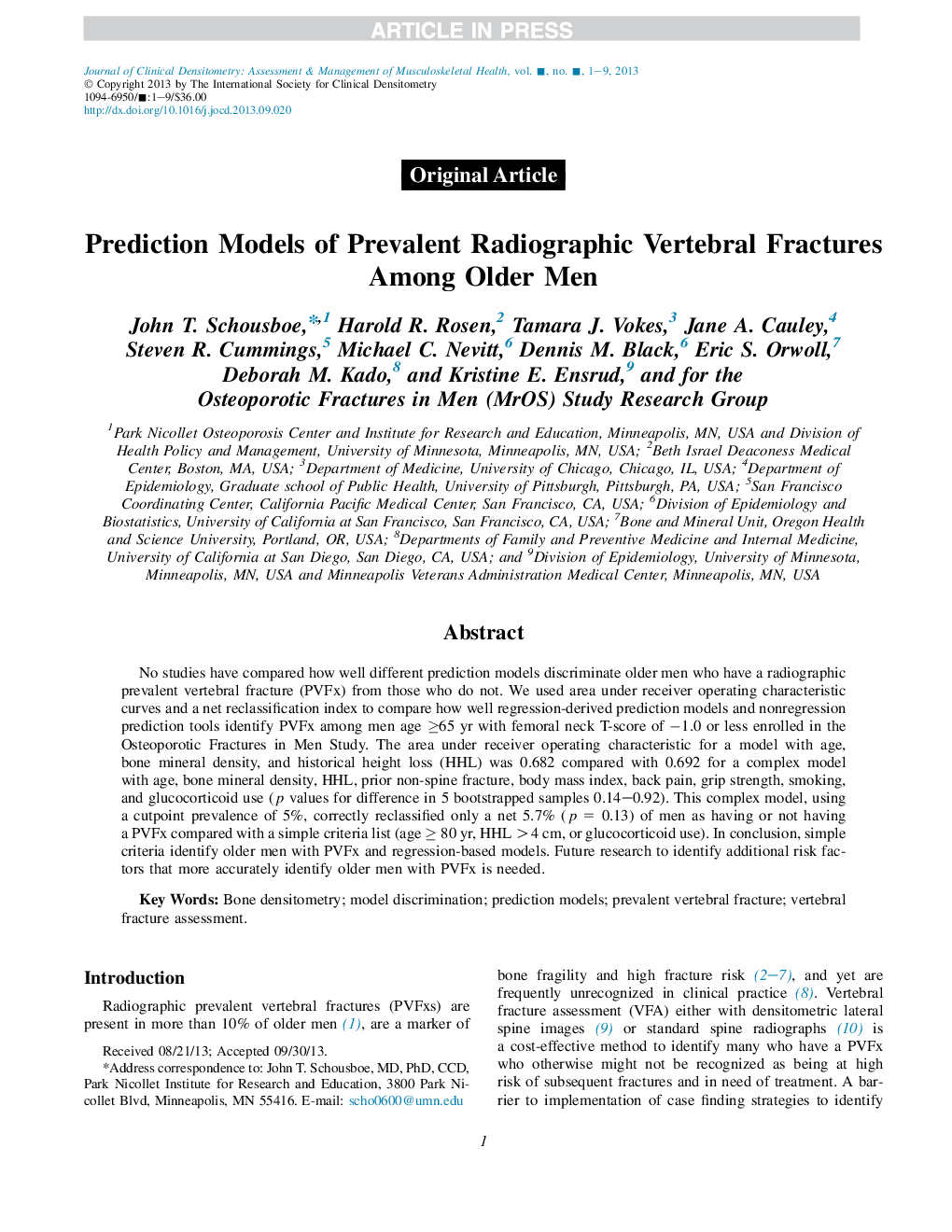| Article ID | Journal | Published Year | Pages | File Type |
|---|---|---|---|---|
| 10168107 | Journal of Clinical Densitometry | 2014 | 9 Pages |
Abstract
No studies have compared how well different prediction models discriminate older men who have a radiographic prevalent vertebral fracture (PVFx) from those who do not. We used area under receiver operating characteristic curves and a net reclassification index to compare how well regression-derived prediction models and nonregression prediction tools identify PVFx among men age â¥65 yr with femoral neck T-score of â1.0 or less enrolled in the Osteoporotic Fractures in Men Study. The area under receiver operating characteristic for a model with age, bone mineral density, and historical height loss (HHL) was 0.682 compared with 0.692 for a complex model with age, bone mineral density, HHL, prior non-spine fracture, body mass index, back pain, grip strength, smoking, and glucocorticoid use (p values for difference in 5 bootstrapped samples 0.14-0.92). This complex model, using a cutpoint prevalence of 5%, correctly reclassified only a net 5.7% (p = 0.13) of men as having or not having a PVFx compared with a simple criteria list (age ⥠80 yr, HHL >4 cm, or glucocorticoid use). In conclusion, simple criteria identify older men with PVFx and regression-based models. Future research to identify additional risk factors that more accurately identify older men with PVFx is needed.
Related Topics
Health Sciences
Medicine and Dentistry
Endocrinology, Diabetes and Metabolism
Authors
John T. Schousboe, Harold R. Rosen, Tamara J. Vokes, Jane A. Cauley, Steven R. Cummings, Michael C. Nevitt, Dennis M. Black, Eric S. Orwoll, Deborah M. Kado, Kristine E. Ensrud,
